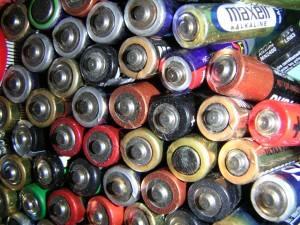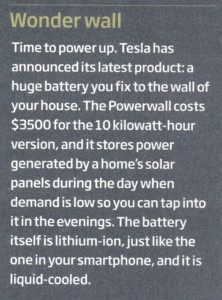
By The Metric Maven
I’ve been over the fact that in SI, or the modern metric system, multiple prefixes should not be used. The idea of a Kilotonne I find to be just plain decanted of information. One should never use KiloMegaHertz or any compound prefixes. The only practice I find more fiendish is when this taboo is broken with ad hoc pre-metric conventions. For instance it is often stated that the distance from the Earth to the Sun is about 150 million Kilometers. The immediate desire to inject the word million to modify the metric prefix Kilo appears to be an irresistible Ye Olde English force. The word million itself is from words that mean one thousand, but it actually is used to mean one thousand thousand. 150 million Kilometers is essentially the same as writing 150 MegaKilometers, but with a space. No metric advocate would put up with concatenating metric prefixes, but little is ever said about million Kilometers. Clearly the introduction of million as a modifier is frivolous as the distance is compactly expressed in metric as 150 Gigameters. Astronomers are insistent on calling this distance an astronomical unit or au or sometimes AU, despite the fact that the metric system easily deals with astronomical dimensions.
Owners of Tesla electric cars are purported to have driven more than one billion gas-free Kilometers. Yet again, the press cannot help but place an unwelcome numerical modifier in front of a metric prefix. The word billion has its own sort of prefix. It originally stood for for bi-millions or a million millions, but now it “unambiguously” means 1000 million. One billion Kilometers is one GigaKilometer. Even more unambiguously it could be said that Tesla electric cars have collectively traveled one Terameter or 1 000 000 Megameters which allows one to immediately note that the circumference of the Earth is 40 Megameters and with a quick computation we see they have traveled around the Earth 25 000 times. The billion non metric ad hoc prefix only gets in the way of numerical understanding.
The light-year (don’t get me started) is about 9.5 trillion Kilometers, which could be rounded to 10 trillion Kilometers as a rule of thumb. In this case the concatenated metric “equivalent” would be 9.5 TeraKilometers. Appropriately, and compactly expressed, it’s 9.5 Petameters and does not need any unwelcome trillion modification. Despite the belief that a light-year is a large value, the nearest star (other than the Sun) is over four times that distance or about 41.5 Petameters from Earth. I’m sure by now readers realize that injecting trillion so that a provincial dimension like Kilometers can be maintained only adds complexity if one wants to actually compare numbers, or use them in a computation. In my view, it is also wordy. This is true for the introduction of quadrillion, quintillion, sextillion and septillion so I will end my examples here. The inappropriate nature of millionth, billionth and so on for numerical reduction also applies. They are all verbose.
When talking about the ratios of numerical magnitudes, that is unit-less multipliers, the words million, billion, trillion and so on are also used and in this case people might think they are appropriate. One hears that something is a million times larger than something else, or a billion times larger and so on. For instance it was reported that a black hole which is 18 billion times as large as our Sun has been discovered in a galaxy known as OJ287. The phrase billion times is quite proverbial, but it could also be shortened. It could be said that this black hole is 18 Gigatimes as large as our Sun. The single word Gigatimes is clearly shorter than the two word description billion times.
Why not Kilotimes, Megatimes, Gigatimes and so on to describe ratios of dimensions in words? I think it’s at least Yottatimes as good of an idea as using confusing long scale or short scale expressions. There is compactness, consistency and instant magnitude recognition when using the metric prefixes in this manner. Brace yourself. I see myself using this expression in future essays, and I encourage you to do so as well.
Related essay:
A Kilotonne is How Much in Metric?
If you liked this essay and wish to support the work of The Metric Maven, please visit his Patreon Page and contribute. Also purchase his books about the metric system:
The first book is titled: Our Crumbling Invisible Infrastructure. It is a succinct set of essays that explain why the absence of the metric system in the US is detrimental to our personal heath and our economy. These essays are separately available for free on my website, but the book has them all in one place in print. The book may be purchased from Amazon here.

The second book is titled The Dimensions of the Cosmos. It takes the metric prefixes from yotta to Yocto and uses each metric prefix to describe a metric world. The book has a considerable number of color images to compliment the prose. It has been receiving good reviews. I think would be a great reference for US science teachers. It has a considerable number of scientific factoids and anecdotes that I believe would be of considerable educational use. It is available from Amazon here.

The third book is called Death By A Thousand Cuts, A Secret History of the Metric System in The United States. This monograph explains how we have been unable to legally deal with weights and measures in the United States from George Washington, to our current day. This book is also available on Amazon here.










